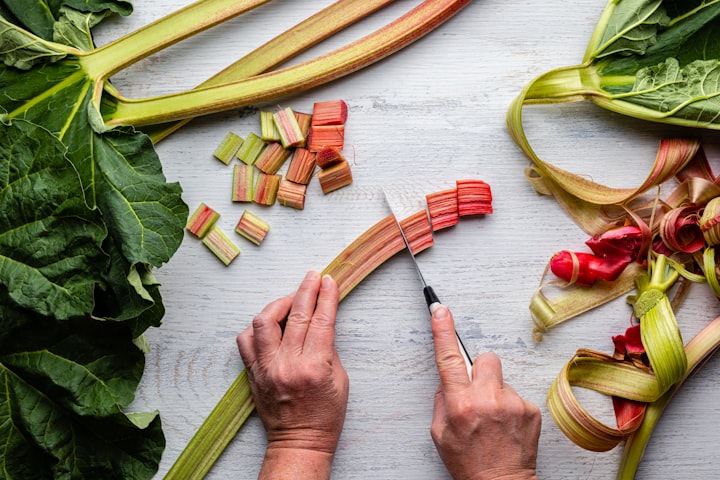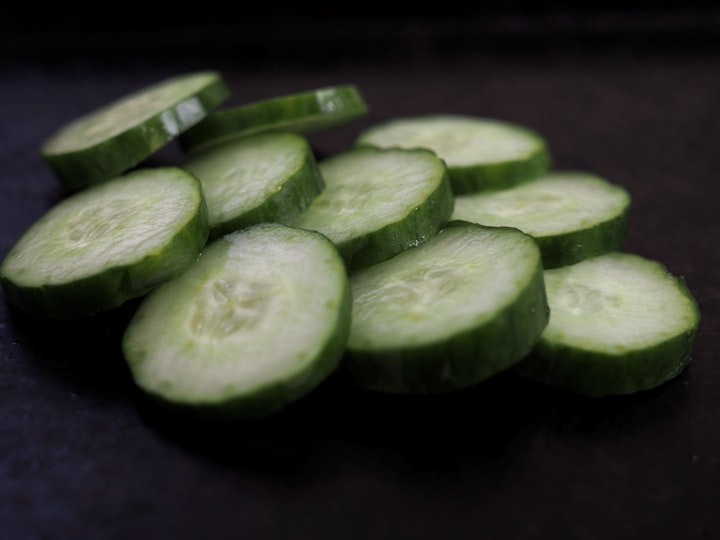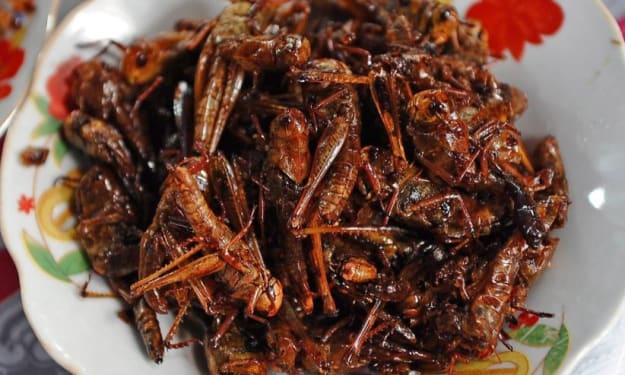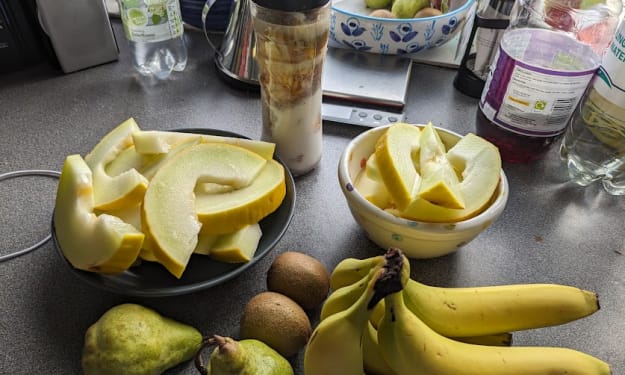Go The Long Haul With Rhubarb
The Decade-Long Living "Pie Plant"

Rhubarb isn't a vegetable I knew much about prior to my co-worker telling me that her weekend plans were to bake a rhubarb and strawberry pie. After she told me, I kept thinking was the combination was peculiar and that pastry crust with raw sugar atop was the most appealing part.
To me, I didn't find a rhubarb and strawberry pie to be baking-worthy. I didn't believe celery and strawberries enclosed by pastry dough to be flattering.
"Who thinks of desserts like that?" I thought.
Little did I know, rhubarb is one of the "silent" vegetables. I labeled the pie plant as a "silent" vegetable because it's flexible in cooking and highly beneficial for your health.
Rhubarb originated from Asia. Additionally, the "fruit veggie" influenced ancient Arab, Greek, and Roman civilizations. In ancient times, civilizations harvested and dried rhubarb for medicinal use.
The popular food grows in large clusters of enormous leaves. The leaves can grow upwards of two feet in width and 60 cm lengthwise. The leaves on rhubarb contain oxalic acid, an undigestible perennial toxic. Only the [pink] stalks are deemed edible. Yellow rhubarb stalks are a result of the anthracene glycosides providing high levels of calcium oxalate. On the contrary, it explains the grittiness between the stalk.
Scientifically known as Rheum rhabarbarum is a member of the smartweed family, Polygonaceae.
In 1947, the US Department of Agriculture classified rhubarb as a fruit, yet truly it's a vegetable!
Maximize your antioxidant intake!
These days, healthy immunity is essential to combat deadly sicknesses and ailments. Whether you're a lover of being in the sun or always dealing with a busy schedule, it's imperative your body receives vitamins and minerals.
Antioxidants found in rhubarb can be responsible for health benefits found in foods like cocoa and wine.
Studies showed rhubarb's total polyphenol content is higher than kale.
Rhubarb is packed with antioxidants such as anthocyanins and proanthocyanidins. Both antioxidants combined share anti-bacterial, anti-inflammatory, and anti-cancer properties. The antioxidant duo protects against heart-related ailments, heart disease, various cancers, and diabetes.

Anthocyanins found in rhubarb stalks are bright red in color. Flavonoids are beneficial for blood vessels and blood pressure. Studies showed anthocyanins can offer cancer-preventive properties.
Eating rhubarb helps people with systemic inflammatory reaction syndrome.
Vitamin A found in rhubarb combats free radicals, early aging, skin damage, and oxidative stress. Studies showed the anti-inflammatory properties found in rhubarb can improve wound healing. Vitamin K found in rhubarb possesses anti-inflammatory properties and prevents blood clots.
Pick and choose the right rhubarb.
The low-calorie food is planted in the fall, winter grown, and harvested in the early spring. In northeast Asia, mountainous weather is ideal for planting a few rows of pie plants. Growth and harvesting vary depending on the [worldwide] region. Rhubarbs grown in the darkness are sour and tender.
Rhubarb plants can grow up to ten years!
I've learned to cook the pink stalks with sugar prior to assembling my Rhubarb and Strawberry Pie because rhubarb has a sour taste.
Red rhubarbs are stronger in taste than green rhubarb stalks.
When choosing rhubarbs, pick stalks that are firm and crisp. Avoid choosing rhubarbs with blemishes and limp stalks.
Don't cut the rhubarb stalks until you're wanting to cook or bake with them. When storing, place whole stalks in zip bags for freshness for up to seven days. I like to store my rhubarb in the salad crisper located at the bottom of the fridge for additional [freshness] time.
Rhubarb is great for jam, compote, or homemade chutneys. Rhubarb is also available in powder and capsule form for easier consumption.
How do you choose to use rhubarb?
What's your favorite rhubarb recipe?
Comment, tip, and let's begin the conversation below!
About the Creator
Ashley Terrell
Bestselling author. Entrepreneur. Seasonings and spices saved my life. Where sheep and angels share the same color. Newport News, VA. Conqueror and lover of all things Fine Arts.






Comments
There are no comments for this story
Be the first to respond and start the conversation.